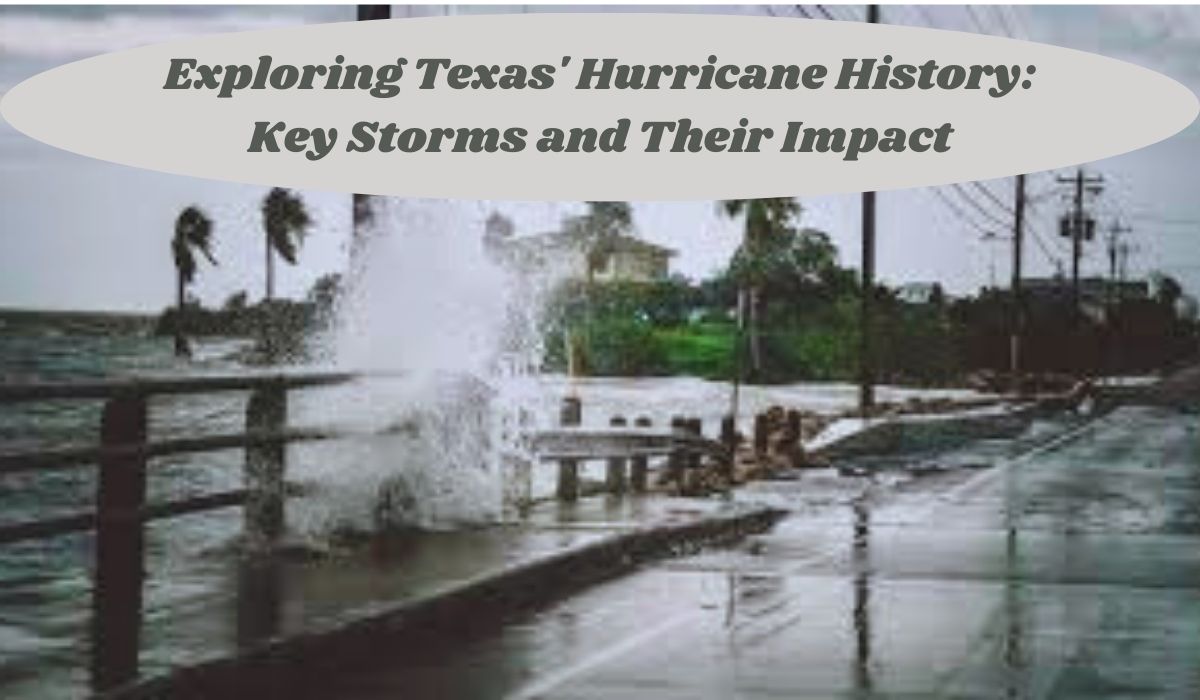Exploring Texas’ Hurricane History: Key Storms and Their Impact

Texas, known for its resilience and diverse landscapes, has a tumultuous history with hurricanes that have left lasting impacts on its coastal communities and beyond. This article delves into some of the most notable hurricanes to hit Texas, their historical significance, and the lessons learned from these devastating natural disasters.
Galveston Hurricane of 1900
Historical Context
The Galveston Hurricane of 1900 remains the deadliest natural disaster in U.S. history. It struck Galveston, Texas, on September 8, 1900, with winds exceeding 135 miles per hour and a storm surge that inundated the island. The hurricane claimed between 6,000 to 12,000 lives, making it the most deadly hurricane to ever hit the United States.
Impact
The devastation prompted significant changes in hurricane forecasting, response, and urban planning. The Galveston Seawall, completed in 1904, stands as a testament to the city’s resilience and commitment to protecting against future storms. The disaster also led to the establishment of the National Weather Service and advancements in meteorological science to better predict and prepare for hurricanes.
Hurricane Carla (1961)
Storm Details
Hurricane Carla made landfall near Port O’Connor, Texas, on September 11, 1961. It was one of the most powerful hurricanes to strike Texas in the 20th century, with wind speeds reaching 175 miles per hour. Carla’s impact was felt across the Texas coast, causing widespread destruction and flooding.
Impact
Carla prompted improvements in hurricane preparedness and emergency response. The storm surge and wind damage underscored the need for better evacuation plans and infrastructure resilience. It also highlighted the importance of public awareness and readiness in coastal communities vulnerable to hurricanes.
Hurricane Harvey (2017)
Storm Details
In August 2017, Hurricane Harvey made landfall near Rockport, Texas, as a Category 4 hurricane. Harvey brought catastrophic flooding to Houston and surrounding areas, dumping over 60 inches of rain in some areas over five days.
Impact
Harvey caused unprecedented damage, displacing thousands of residents and causing billions of dollars in property damage. The storm’s slow movement exacerbated flooding, highlighting challenges in disaster response and urban flood management. Harvey prompted renewed focus on flood control infrastructure, emergency preparedness, and community resilience in the face of extreme weather events.
Hurricane Ike (2008)
Storm Details
Hurricane Ike struck near Galveston, Texas, on September 13, 2008, as a Category 2 hurricane. Ike’s immense size and storm surge caused significant damage along the Texas coast, including widespread power outages and infrastructure destruction.
Impact
Ike prompted extensive recovery efforts and improvements in coastal resilience. The storm surge highlighted vulnerabilities in coastal communities and underscored the need for enhanced building codes and infrastructure standards to withstand hurricanes. Ike also led to advancements in disaster response coordination and evacuation planning.
Lessons Learned and Future Preparedness
Advancements in Forecasting and Preparedness
Texas’ experience with hurricanes has driven advancements in hurricane forecasting, early warning systems, and evacuation protocols. The state continues to invest in meteorological research and infrastructure improvements to better predict storm paths and mitigate risks to coastal communities.
Community Resilience and Education
Hurricanes have reinforced the importance of community resilience and public education. Initiatives to educate residents about hurricane preparedness, evacuation routes, and flood insurance have become integral to disaster response strategies in Texas. Community engagement and partnerships with local authorities and nonprofits play a crucial role in enhancing readiness and response capabilities.
Infrastructure and Urban Planning
The impact of hurricanes on Texas has spurred improvements in infrastructure and urban planning. Investments in flood control measures, resilient building design, and coastal protection systems aim to minimize future storm damage and safeguard communities. Efforts to retrofit existing infrastructure and implement green infrastructure solutions are also underway to enhance resilience to extreme weather events.
Conclusion: Navigating Texas’ Hurricane History
Texas’ hurricane history is marked by resilience, tragedy, and lessons learned. From the devastating Galveston Hurricane of 1900 to the catastrophic floods of Hurricane Harvey, each storm has shaped Texas’ approach to disaster preparedness and response. As the state continues to face the threat of hurricanes, ongoing investments in research, infrastructure, and community resilience are critical to mitigating risks and protecting vulnerable populations.
By exploring Texas’ hurricane history, we gain insights into the evolving challenges posed by extreme weather events and the ongoing efforts to build a safer and more resilient future for all Texans.



One thought on “Exploring Texas’ Hurricane History: Key Storms and Their Impact”